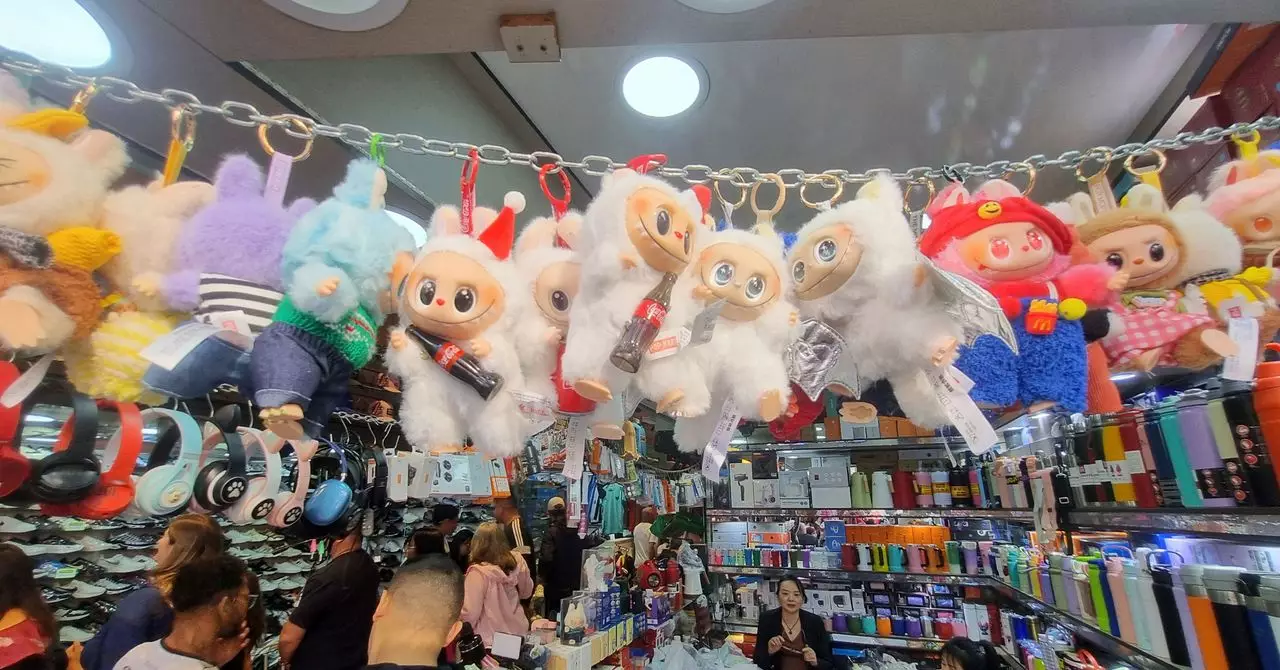In recent years, the toy industry has witnessed a seismic shift, largely driven by the sudden surge of Labubu, the mischievous elf plush that everyone seems to crave. Once a niche character within Pop Mart’s eclectic lineup, Labubu has transcended its origins to become a cultural icon. The character’s viral status is not merely a fleeting trend but a testament to the power of innovative marketing and social media-driven hype. Its appeal stems from more than just visual cuteness; Labubu encapsulates a youthful rebelliousness that resonates across diverse demographics worldwide. This phenomenon underscores how a well-crafted character, coupled with strategic distribution and cultural relevance, can elevate a brand into the stratosphere.
Financial Triumph and Strategic Domination
Pop Mart’s recent financial disclosures paint a striking picture of success. The company’s revenue has more than doubled, climbing 204 percent from the previous year, with net profits swelling by an extraordinary 362 percent. Such explosive growth is hardly common in the toy industry, which traditionally favors incremental gains. Central to this triumph is the Labubu franchise, which alone generated close to 5 billion RMB, approximately $670 million in just six months—an increase of over 668 percent from last year. To put this into perspective, traditional giants like Mattel are struggling to reach comparable figures, highlighting how rapidly Labubu has redefined market dynamics.
The rise of the Monsters universe, anchored by Labubu, now accounts for nearly 35 percent of Pop Mart’s total revenue—a staggering leap from 14 percent less than a year ago. This isn’t a mere blip but a clear signal of shifting consumer preferences toward collectibles that combine aesthetic appeal with social cachet. Pop Mart’s aggressive expansion into plush keychains—an unanticipated hit—further amplifies its dominance. These small, tactile tokens serve as more than mere accessories; they are symbols of pop culture and status among influencers, from Rihanna to Lady Gaga. Their popularity has driven plush sales to an astonishing 6.13 billion RMB ($854 million), accounting for nearly half of the company’s revenue.
Viral Market Dynamics and Cultural Impact
The success of Labubu is fueled not just by product quality but by a complex web of social phenomena. Celebrities showcasing these plush charms on social media turn casual viewers into fervent collectors. The allure of limited releases, sold-out stock, and secondhand markets where prices soar above retail creates an aura of exclusivity that fans find irresistible. The supply chain manipulations—deliberate shortages orchestrated by Pop Mart—add to the mystique and desirability of the toys, fueling a thriving secondary market that keeps Labubu’s legend alive.
This phenomenon exemplifies how modern marketing has shifted away from traditional advertising to harnessing the power of peer influence and digital communities. By creating a sense of scarcity and desirability, Pop Mart has managed to establish Labubu as more than a toy—it’s a cultural artifact. Its widespread adoption across continents, especially in the US where sales exploded over 1,100 percent, illustrates the global appetite for cute, collectible objects that carry a rebellious edge.
Furthermore, the rapid proliferation of Pop Mart’s physical stores—particularly in the United States—indicates a calculated push into Western markets, positioning Labubu not just as a product but as a lifestyle statement. The company’s strategic store expansion, combined with aggressive online marketing, capitalizes on the universal language of cuteness and rebellion, making Labubu a symbol of modern pop culture.
Reflecting on the Future of Collectibles and Consumer Culture
Labubu’s story exemplifies a broader trend where merchandise transcends mere utility and becomes a vessel for cultural capital. Its viral success demonstrates how brands that tap into emotional resonance, combined with savvy marketing, can build an almost unrivaled loyalty. As Pop Mart continues to innovate with new variations and expanded product lines, it’s clear that the Labubu empire is only just beginning. The connection between a charismatic character and a global community of fervent fans showcases a shift in how consumers relate to brands—more emotionally engaged, more sophisticated, and more willing to invest in narratives that resonate on a personal level.
This dynamic signals a future where storytelling, exclusivity, and social validation define the most successful brands. Labubu exemplifies how a whimsical character, when amplified through savvy marketing and social media strategies, can ascend to cultural icon status—and the financial stakes are evidently enormous. As Pop Mart’s empire continues to grow, it will be fascinating to see how these collectible phenomena evolve and what new barriers they will break in the realm of consumer culture.

